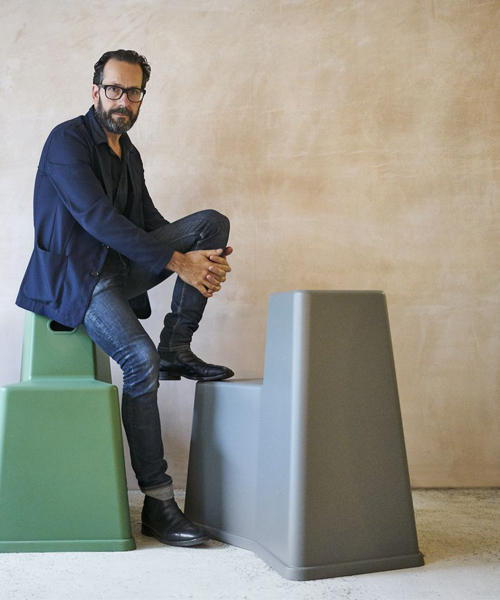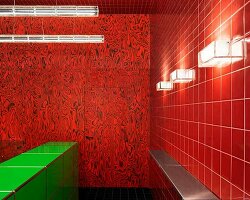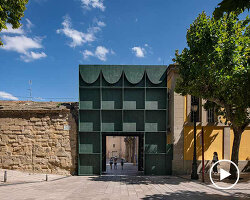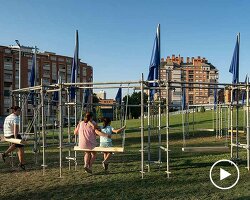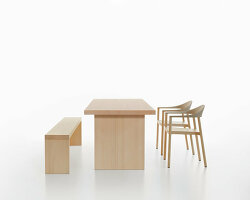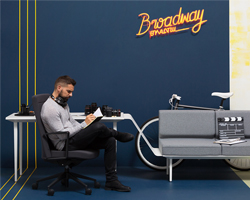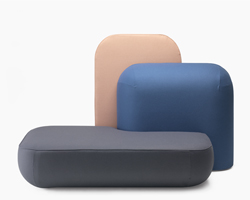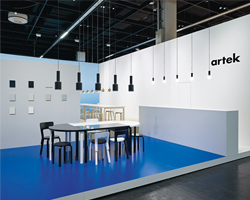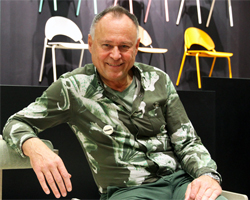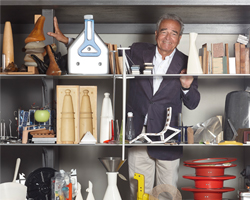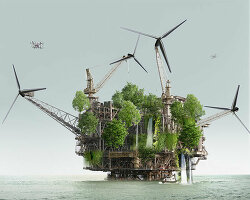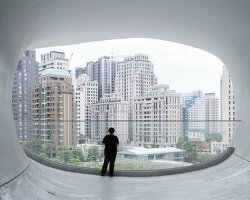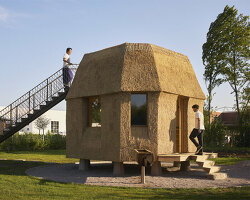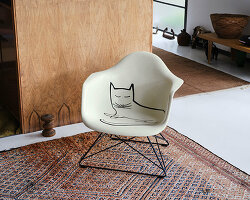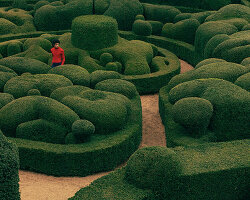VITRA work at orgatec 2016: konstatin grcic presents the ‘chair table’ and ‘stool tool’ for VITRA as part of the furniture brand’s ‘work’ project. the two furniture pieces join ronan and erwan bouroullec’s ‘cyl’ system as part of an exploratory design study by VITRA, which they might introduce as standard products in the future. in his response, the german designer addresses the theme of super-flexibility and has produced two multi-functional concepts.
at the orgatec 2016 in cologne, germany, designboom interviewed konstantin grcic where we discussed the influences behind his design study, the applications of his two concepts, and how soon we may see them in our offices.
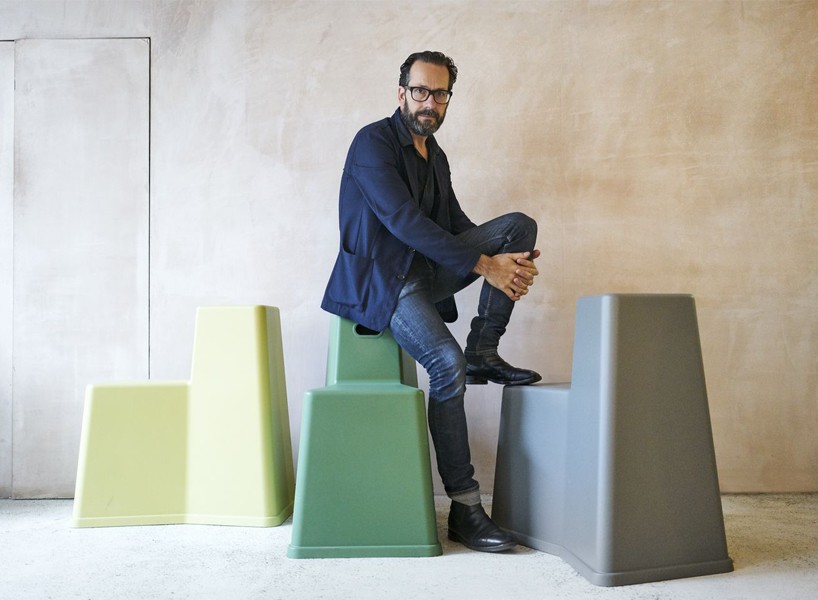
konstantin grcic using the VITRA ‘stool tool’
the VITRA ‘stool tool’ by konstantin grcic, is a multi-functional furniture solution for the workplace, uniting a chair and a table in a single object. adaptable for use as both a striking solo piece or in multiple groupings, the monolithic furniture features step-like platforms to accommodate different seating heights and a wide range of uses. furthermore, the plastic tool is light and practical so can be stacked away when not needed.
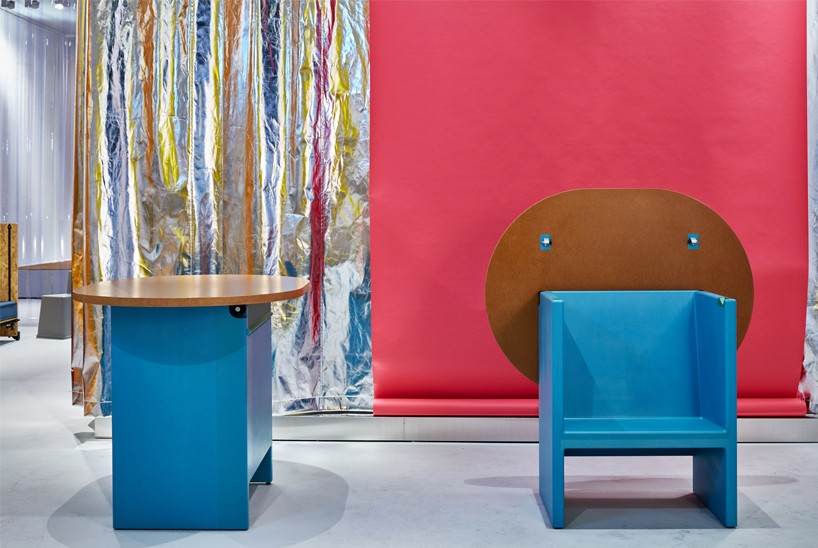
the ‘chair table’ acting as both its versions
konstantin grcic’s ‘chair table’ builds upon an idea of multi-functional furniture dating back to the 19th century, and as the name suggests, unites a chair and a table in one. the design follows new trends in contemporary workplaces, where flexible different spaces for work, meetings and quiet concentration are needed. as one version, the furniture piece acts as a standing workstation for informal group activities. however, with an easy adjustment, the table folds back to reveal a sheltered retreat where work that requires high concentration can be completed.
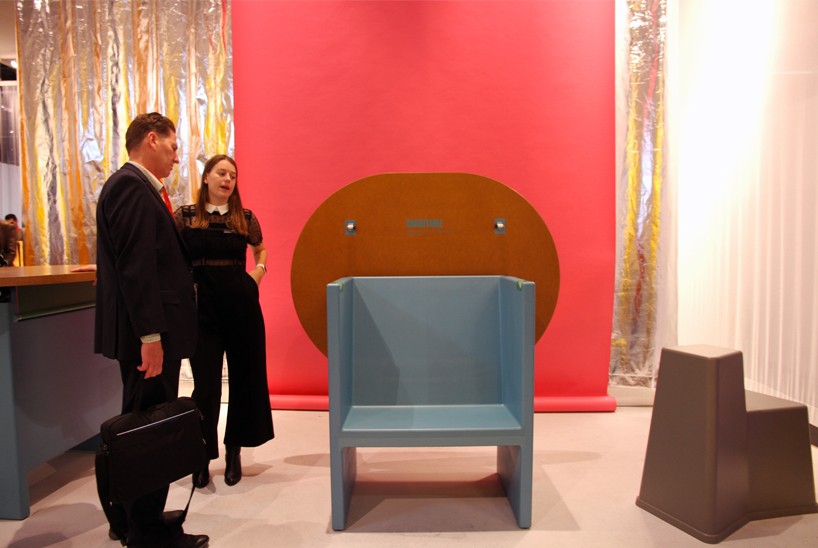
the ‘chair table’ folded up to provide a private workstation
image © designboom
to find out more about the design study, how it first got started, and how it fits in within the modern working world, we spoke with konstantin grcic at orgatec 2016.
designboom (DB): first of all, what were some of the keys ideas behind your two new pieces of furniture for VITRA, and where were these influences sourced from?
konstantin grcic (KG): well to start with, there really was no brief. VITRA and myself are in a constant discussion about what is the office of today and how it can it develop in the future. we ask questions like; what are the situations that already exist, or what are the needs for responding to certain work situations? work is not just work. it is also about offering space, quietness, relaxing zones, and real tools for tasks. I think my approach for those two pieces, the ‘chair table’ and ‘stool tool’ for vitra was a little bit different. when you travel to the west coast of america; silicon valley or los angeles, people work very hard but in a very different way. it is interesting how their culture has completely turned all of what we had previously achieved through decades of office design. they have turned it upside down. they don’t really want any traditional office furniture. they are fine with just a ping pong table and a good chair. however, they do also need other types of products like chairs and tables for sit-stand situations and meetings. they are extremely flexible – everything is constantly changing and it is a dynamic process. I felt that this was where we could find answers to what an office environment is today. for me, the answers could be a big solution and system that is so flexible that it could do everything. however, I think another possible answer is to implement small solutions. by proposing small, simple pieces, the workplace can be adapted and used in many different ways. I believe that most of these two new pieces are within that kind of spirit.
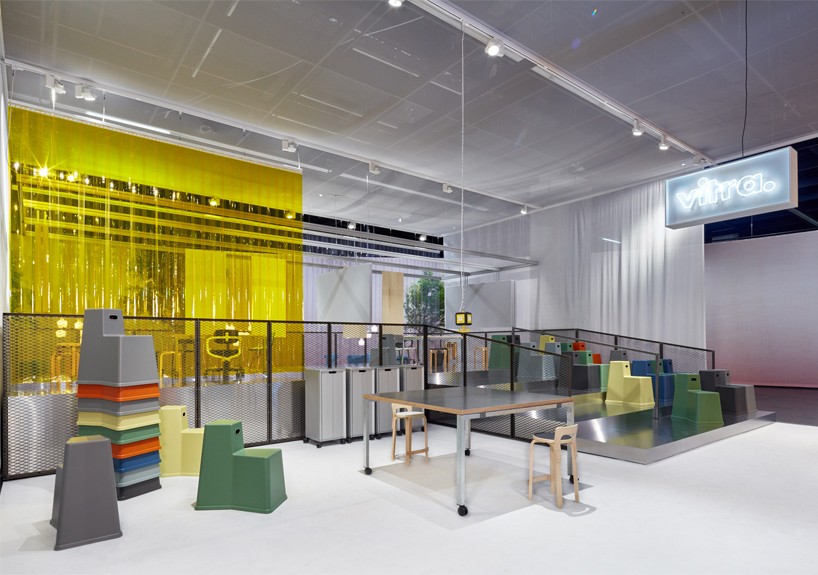
the two concepts were presented as part of VITRA’s ‘work’ project
DB: talking about the two new products here at the VITRA work exhibition, can you first of all tell us more about the ‘chair table’ and its dual-purpose?
KG: to start with, the ‘chair table’ is actually based on a strange but traditional piece of furniture found in north america. normally it would be a quite boxy, geometric wooden armchair with a backrest that folds over the arm to become a table. we have taken exactly that idea but have made the armchair a taller box. therefore the table that folds down, becomes a meeting, standing table, and the armchair is a box, a space, within a workplace environment. this could be a space where people make phone calls or sit in contemplation. this project is really a concept. we have resolved the mechanics, which was very complex, but we are showing it as a prototype. it is clearly not finished, and so is still in prototype materials. we are not saying that in the future, it will exist in a certain material etc. I think it is a proposal to see what people make of it, and maybe say that it is interesting and can see exactly where and how to use it. it could be one of those ideas that maybe is in the air and is fine to show and discuss, but it doesn’t have to become a product. I am convinced that it has the potential to become a product but I do not want to be too protective about the idea. I want to follow this spirit of silicon valley – putting out ideas and not being too protective about them. we can put out the ideas and see what happens, whether that is being developed by others, but overall, it encourages people to create better versions.
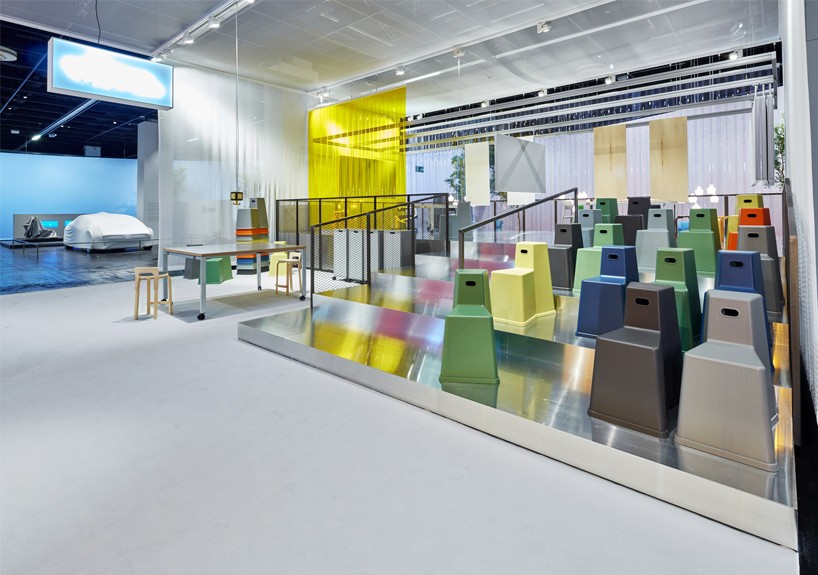
the ‘stool tool’ can be used as a stand alone product or in large groups for conferences
DB: the second product, the ‘stool tool’, was initially shown during the London design festival and primarily encourages flexible seating opportunities. can you describe the adaptive qualities of the tool and how it fits into today’s office environment?
KG: the ‘stool tool’ is, in a similar way to the ‘chair table’, a marriage between two things; one a chair and the other a table. these are morphed into a one volume. it is a very pragmatic design of a concept for a simple tool, which is to sit on and whilst you sit, you lean on or work on the surface. the user sits on the lower level, whilst the upper one naturally becomes the armrest or table. however, the upper level could be a high-stool, where the lower platform becomes a foot rest. you can use it in many different ways and however you want to sit on it. you may not even want to sit on it at all, you may want to use it as a side-table with two levels. what was most important about it, was making it as simple as possible in function. this was basically creating two levels at the right height, and creating an object which has the smallest possible footprint, yet the biggest size possible. that, combined with its necessity for being stacked, in a way created the geometry of it. you can have a tower of these stools. they are made from plastic polypropylene. there is also a handle so you can take them off quickly and put six in a space for quick small seminars or meeting situations. as well, you can just take one off and wonder into a corner with it. this then becomes your own little work station.
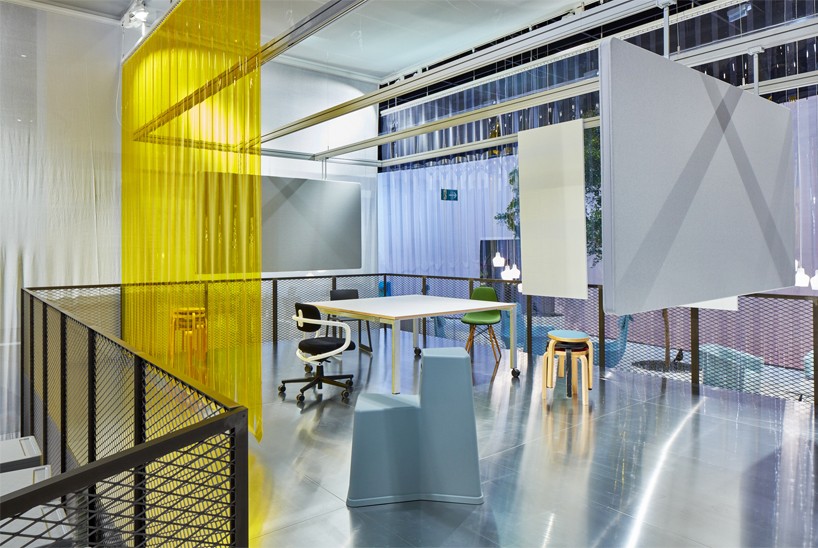
konstantin grcic’s design study was within a highly flexible workspace
DB: what are the office situations that you see the ‘stool tool’ being most suited towards? Are they geared towards conference or meeting rooms, or do you see them being used across multiple workplace areas?
KG: ideally, I would see it in many different situations. it could be used singularly or as many in a big office environment. one could easily wonder off with a stool. it is made from plastic so it can be used outside as well. I think that this is such an important aspect for the way we work and where, when and how we do it. the dynamics of work is changing so much that we are taking stuff outside of work and continuing. this plastic thing can help you do it. called ‘stool tool’, it implies how it is made to be used and you don’t really have to care about it. of course, it will get dirty but you can easily wipe it down. you can leave it outside, it will get wet but it will dry. it can get kicked around in an office and it will still be fine. this is not the solution for everything, it is kind of adding a small simple idea into the complex landscape of what an office is. I think that the quality of an office today is the complexity and the many different situations and solutions.
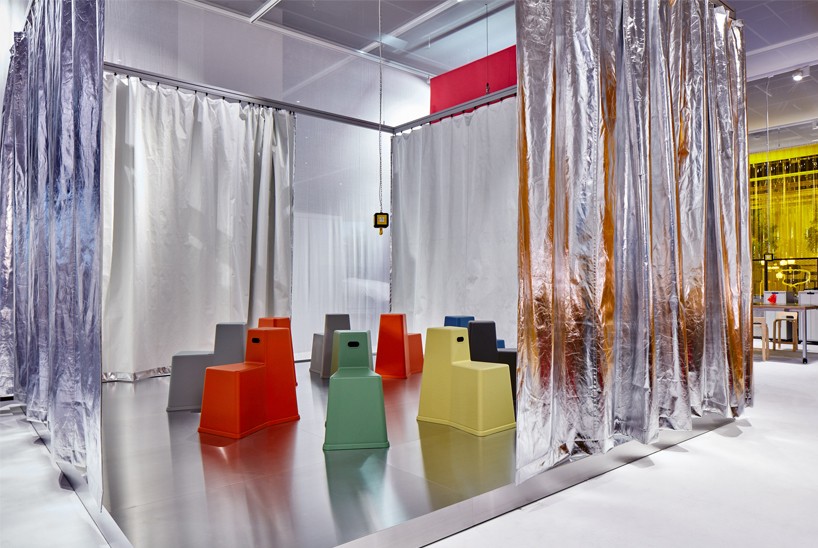
DB: out of the two products, which one do you think is the most ready to fit into an office environment today?
KG: well I think the ‘stool tool’ is the nearest one really. with the ‘stool tool’, VITRA can already tell you a price and its material. they cannot say when it will be launched, but we are waiting for feedback from this fair to decide the next step. it is very near to becoming a product because it is a simple, little thing that is economical and would be easy to sell. it is not a big piece of furniture so would not require a big investment from companies. I think these little products can be very useful, and can be stacked away when not needed. I find them very charming, it is not the big innovation at the fair but it is a proposal. everybody now is talking about start-ups and cool new companies in silicon valley, and I think the only way we can come to a level with them is to use their attitude to work. a great example is programming. it is very easy, you program something, put it out and then it gets reworked. it does not need a heavy investment as it is not physical, so therefore it has less of an impact. there is something so beautifully simple in it, and I think in furniture, we could do something like that. with VITRA, I think it would be really good to learn this process; to do simple, quick projects that will get lots of promise.
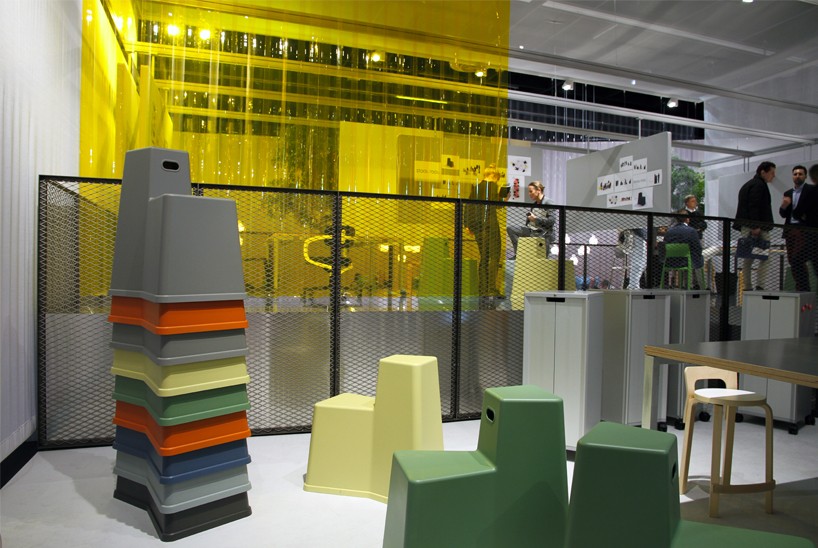
the plastic designs can be stacked
image © designboom
DB: would you say that the speed of the design process for these products is the key difference between them and some of your previous work for VITRA?
KG: it is a learning process. For these projects, I wanted to change my own strategy. VITRA is a great company to work with, but I think that the long processes drag out and create heavy projects. this world that we are discussing – the world of start-ups – are exactly the opposite. they are improvised, dynamic and changing things; growing and shrinking quickly. for me, that was my role model.
DB: will your next projects for VITRA develop these concepts further or will you go into a different challenge with the company?
KG: I am not really sure. I really want to continue doing this kind of stuff. after this fair, we will draw a line and we hope that the feedback and response will be positive enough to encourage us to do more – I would be super happy to do this. I do like the long processes of more complex projects as well. if we find a good balance between both then that would be great.
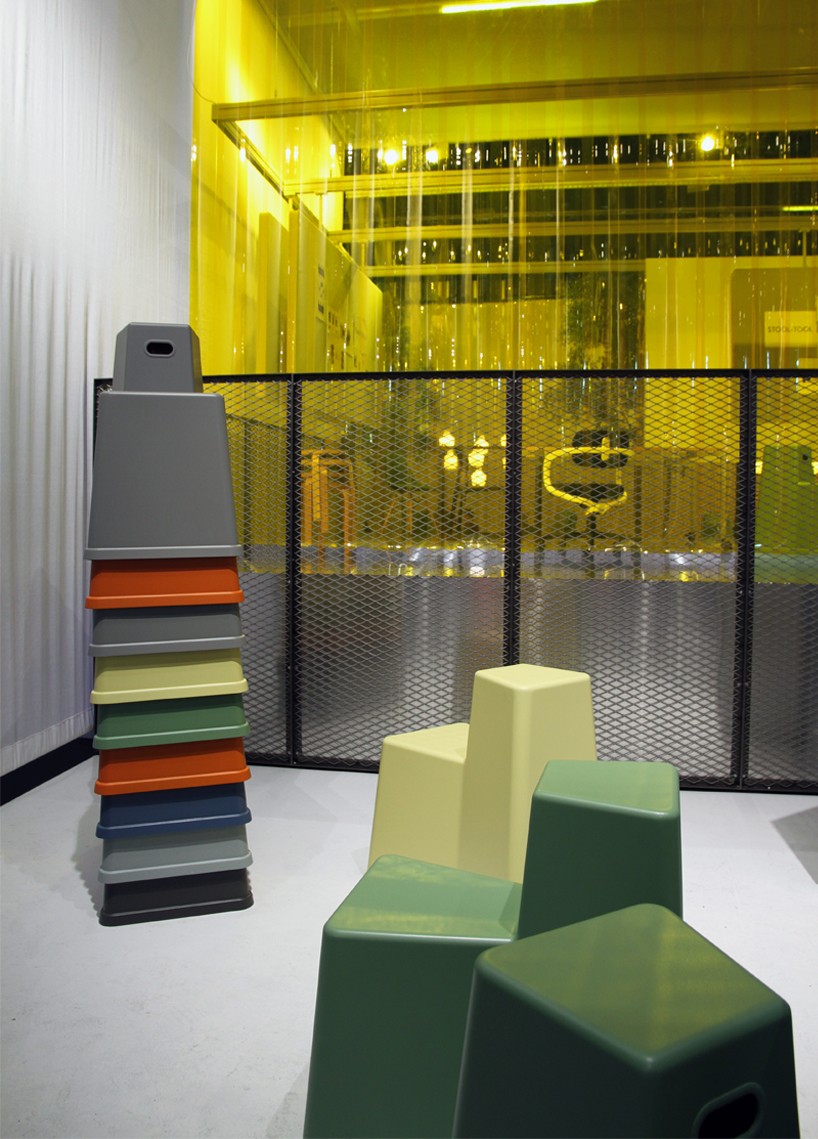
a close-up of the monolithic pyramid of ‘stool tools’
image © designboom
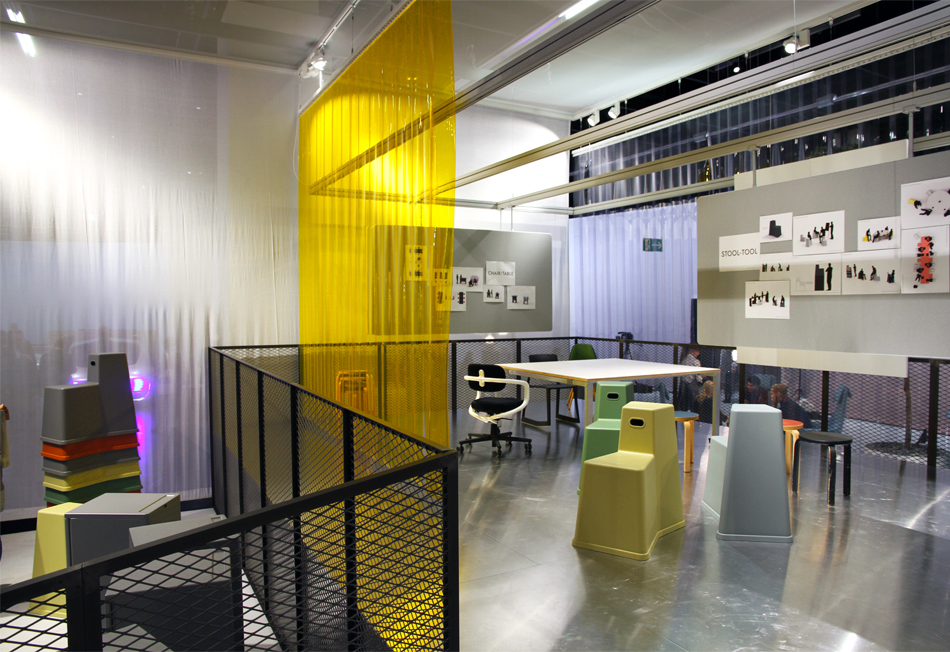
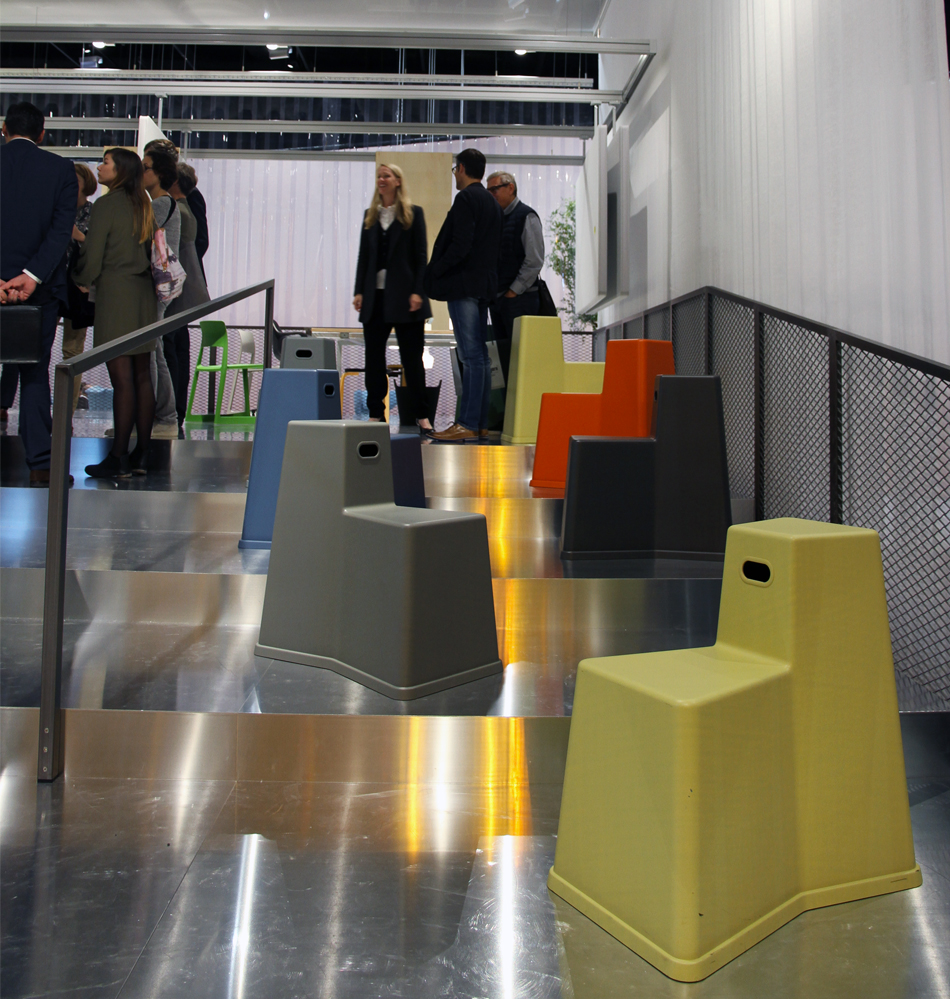
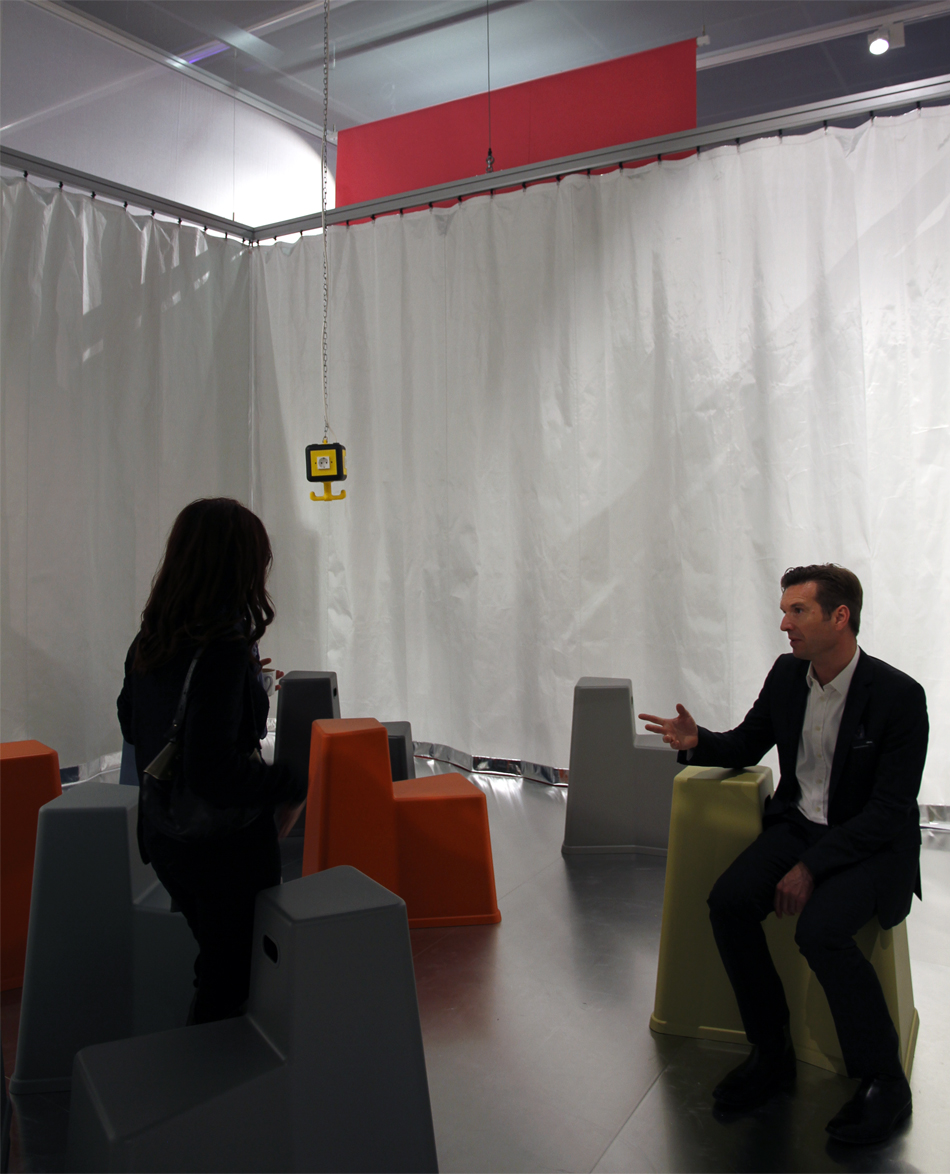
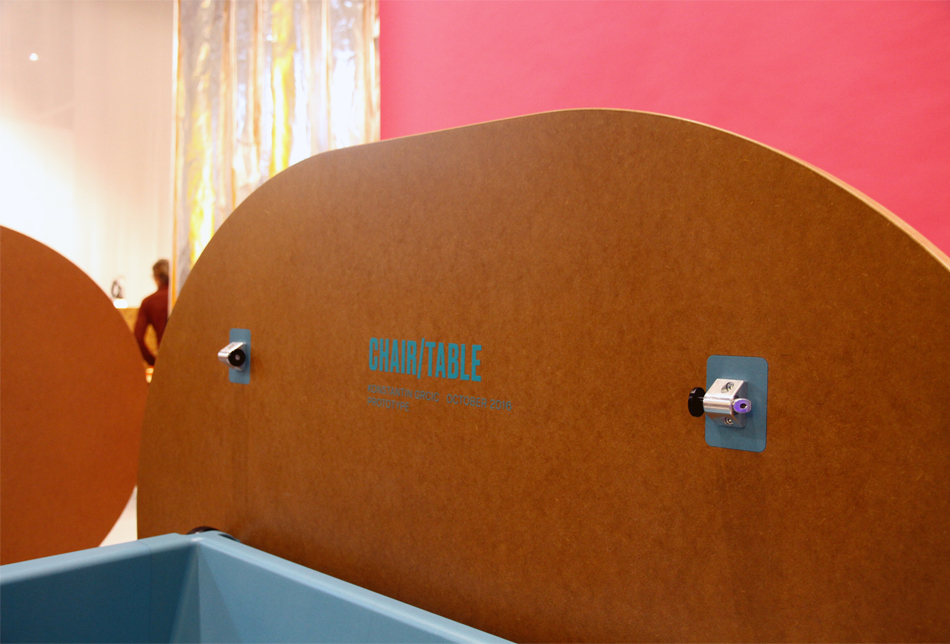
Save
KONSTANTIN GRCIC (93)
ORGATEC 2016 (15)
VITRA (97)
PRODUCT LIBRARY
a diverse digital database that acts as a valuable guide in gaining insight and information about a product directly from the manufacturer, and serves as a rich reference point in developing a project or scheme.
